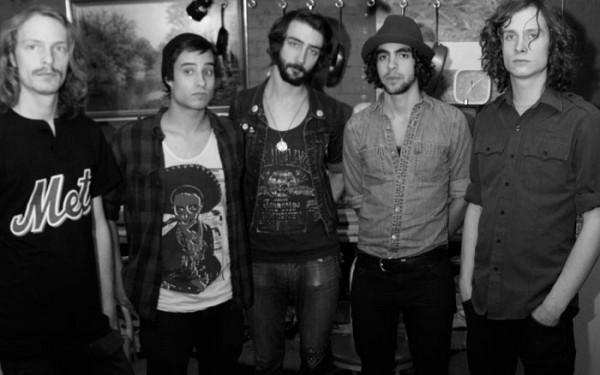CONCERT REVIEW: Lucius’s Asymmetrical Symmetry At Its Finest
TORONTO – Watching a Lucius performance is like watching a love affair in a glass box. The five band members, each wearing near identical clothing and hairstyles, look into each other’s eyes, apparently in their own world while mirroring instruments to make smooth and layered melodies.
Lucius played part of a six-set show at the Adelaide Hall June 18, during Toronto’s annual North by Northeast music festival. The octet San Fermin, friends and past collaborators of the band, was also part of the six-hour night.
Each of the six bands were allotted a mere hour for set-up and performance, so setlists were generally limited to half an hour or less.
Following performances by Lobby, Cathedrals and San Fermin, where band members moved around the stage like a dance floor, Lucius’ arrangement appeared all the more striking and carefully arranged. The symmetry iconic to both the band’s look and sound extended significantly to their performance on stage.
The Brooklyn-based band’s history goes as far back as 2005, when lead singers Jess Wolfe and Holly Laessig met in the Berklee School of Music, performing casually under the same band name. After purchasing a Victorian home together with a decked out studio, Dan Molad, Peter Lalish and Andrew Burri joined in the collaboration. A decade later, Lucius has developed into one of the most succinct and unique indie-pop-country bands today.
The band takes pride and pleasure in their physical aesthetic, never seen in anything but a magazine-ready look from head to toe. Like twins, Wolfe and Laessig religiously match haircuts (in both colour and cut), makeup and clothing, in spite of their distinctly different physical attributes.
At NXNE, along with Wolfe and Laessig’s dyed hair and matching white chiffon full-piece outfits, their male counterparts donned sailor tees and uniforms. On either ends of the stage, two drum kits were set up facing inward to Wolfe and Laessig at centre stage, each with their own snare and interlocking mics.
Their first song “Tempest” transitioned smoothly from silence to a powerful lullaby. Arguably, Lucius’s most unique quality is their old-fashioned use of vocals for both harmony and strength in numbers.
Laessig and Wolfe carefully share every word (often facing each other), and use subtle onstage visual cues—small nods or playful nudges—to plan notes and harmonies. Different from most of their recordings, the performed songs were introduced by slowly built-up percussive rhythms made up of snares, maracas, cowbells, and claps, making it difficult to know which song was next until the vocals joined in.
Beginning their careers with jingle-writing for commercials, it’s clear that Lucius has mastered the art of hearty old-fashioned charm with tracks that carry through both musically and lyrically.
Laessig has noted that she and Wolfe “both struggle to sing alone at this point.” To be honest, I don’t have any problem with that. Keep jiving, Lucius.

_820_655_90.jpg)
_600_832_s.png)


